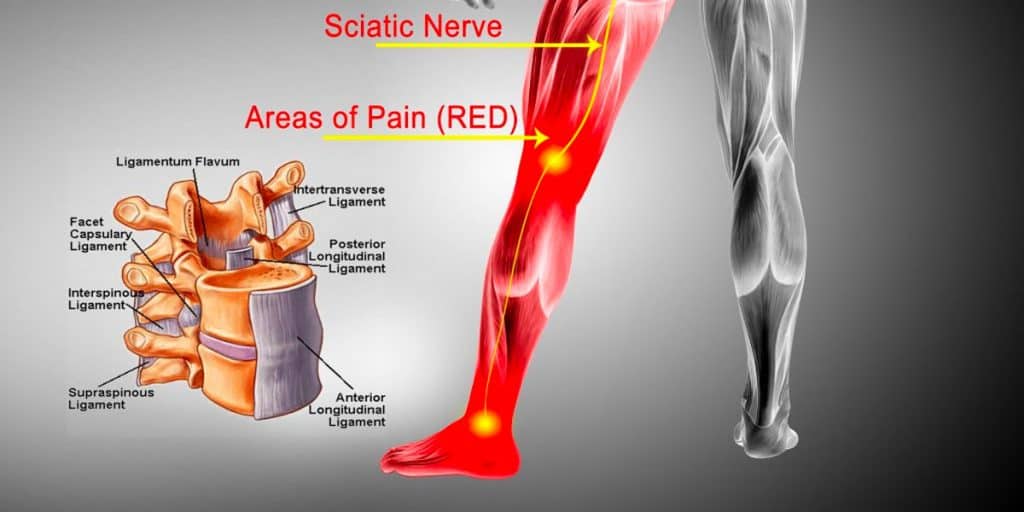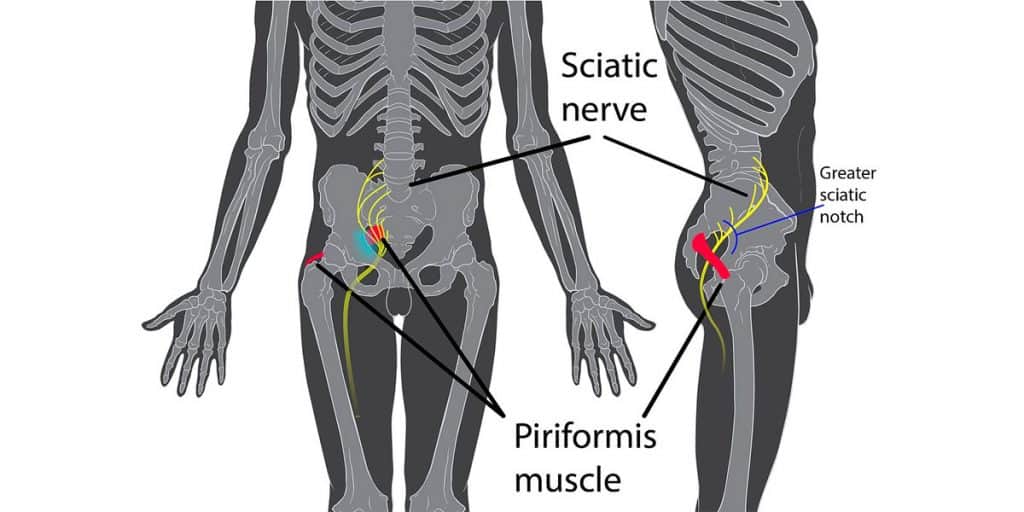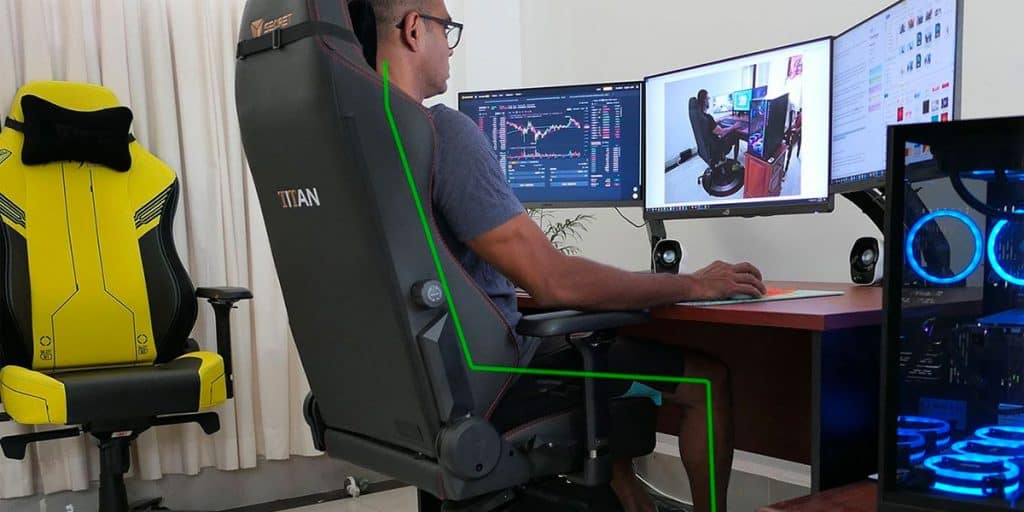How To Comfortably Sit With Sciatica?

As we have heard on countless occasions, sitting is bad for us. Sitting for prolonged periods is known to increasing the risk of developing chronic health problems such as heart disease, diabetes, obesity, and even cancer. At times, too much sitting can also take a toll on a person’s overall mental health. While sitting for hours can shoot up your cholesterol levels, it takes an even more significant toll on your muscles. The majority of muscular disorders are caused because of a sedentary lifestyle.
Sitting is the primary reason why people develop pain in the neck, back, and lower back. Prolonged hours of sitting are known to impact a person’s overall posture, compress the spine, and can lead to premature degeneration. All this can lead to chronic pain, which can put you on bed rest for weeks to come. Another common condition caused by sitting is Sciatica. Sciatica is not a medical condition and can go away after performing regular exercises.
However, it is crucial to have proper knowledge about what Sciatica is, the causes, the symptoms, and the appropriate diagnosis and treatment against the same. In this article, we will discuss Sciatica in detail and lay down the common causes, symptoms, diagnosis, and possible treatments against the same.
What Is Sciatica?

Sciatica and pseudo-sciatica can cause numbness and tingle from your low back down to your foot. It typically originates as a radiating leg pain from the back and then makes its way towards the buttocks, down the back of your thigh, and finally into your foot. It is another term used to described symptoms such as pain, weakness, numbness, or a burning sensation in your legs.
Simply put, the excruciating pain that originates from your sciatic nerve and then makes its way into your legs is termed Sciatica. Most of the time, the pain radiates in the buttocks and legs and is sharp, which causes extreme discomfort to the patient. The pain caused by Sciatica can range from mild to severe and feels sharp and aching.
1. What Causes Sciatica?
Sciatica is the name given to the pain caused by the irritation of the sciatic nerve. This pain is generally felt either in your back, lower back, or in front of your leg. Anything that irritates your sciatic nerve can cause immense pain. The primary cause of Sciatica is when a nerve in the lower spine gets compressed. A compressed nerve is usually the result of a herniated disk or a dense bone on your vertebrae.
At times, this nerve is compressed or pinched either by a tumor or by the damage caused by diabetes. Some other major causes of Sciatica are pregnancy, childbirth, or heavy lifting. Heavy load stress can also play a role in triggering this condition since it drastically changes your posture and puts unnecessary pressure on your back. Sitting for long periods is known to aggravate the pain caused by Sciatica.
In short, here are some of the factors that can cause Sciatica
- Herniated Disk
- Tumor
- Lumbar Stenosis
- Spondylolisthesis
- Disease Damage
- Pregnancy
- Child Birth
- Heavy Lifting
- Chronic Stress
- Obesity
- Prolonged Sitting
Also Read: Best Gaming Chairs with Footrest
2. What Are The Symptoms Of Sciatica?
As we mentioned earlier, there is a range of factors that can compress your sciatic nerve and trigger sciatica. Sciatica itself is a symptom and not a medical condition. The primary symptom of Sciatica is excruciating pain either in the lower back, buttock, or the leg …
Some of the common symptoms of Sciatica include
- Constant pain in only one buttock or leg
- Burning or tingling sensation in the toes and feet
- Weakness, numbness, or difficulty in moving the leg around freely
- Difficulty in standing up
- Excruciating pain when walking
Sciatic pain can sometimes get severe with movement, which can ultimately lead to loss of movement temporarily. Those living a sedentary lifestyle are more prone to developing Sciatica. Also, the excess body weight caused by obesity tends to put immense weight on your spine, ultimately leading to the compression of the sciatic nerve.
3. Where Is The Sciatic Nerve Located?
The sciatic nerve originates from your lower back through the buttocks and makes its way down to each leg. There are five nerve roots in totality that come together to form a left and right sciatic nerve. The left nerve runs through the LHS of your body, whereas the right runs through the RHS. Both these nerves branch through the lower back and go down into your left and right leg, respectively.
Sciatica vs Piriformis Syndrome: How To Differentiate Between The Two?

Sciatica and Piriformis both have direct links with the sciatic nerve since they directly affect nerve functioning. However, there is a sizeable difference that separates the two. People often confuse the two. Though Sciatica and Piriformis Syndrome display the same symptoms, they are two different conditions that need to be treated differently.
Sciatica is the irritation/inflammation caused to your sciatic nerve that allows pain to go down into your lower back, buttocks, or either leg. This inflammation is primarily caused because of a herniated disk or spinal stenosis. These conditions can compress/pinch one or more sciatic nerves in your lower back which can cause you immense pain and irritation either in your lower back, buttocks, or leg. In the case of Sciatica, the leg is the primary area wherein the pain occurs the most and slowly radiates into your feet and toes.
The Piriformis Syndrome also occurs because of irritation/inflammation caused to your sciatic nerve. However, here the sciatic nerve is compressed/pinched because of the piriformis muscle located deep into your pelvis. Unlike Sciatica, the pain caused by piriformis syndrome generally originates into the buttocks and then makes its way through the thigs and into your legs. In the case of piriformis syndrome, the buttocks are the primary area wherein the pain occurs the most. If you do have Piriformis Syndrome, you can read this article of ours that explain the specific method of how to sit with Piriformis Syndrome.
Also Read: Furmax Gaming Chair Review
How To Sit With Sciatica?

Work is unavoidable. While prolonged sitting is one of the root causes of Sciatica, we all need to find a way to work with it. The majority of the jobs require sitting at a desk for hours. This can aggravate the condition if you already suffer from Sciatica. However, making minor tweaks to your posture can help you sit with Sciatica. Here are some of the things you need to implement if you plan to sit with Sciatica for many hours.
1. Adjust Your Posture
The majority of neck, back, and lower back problems are caused due to improper posture. The key to sitting with Sciatica has the correct posture in place. Having a good posture ensures that your bones are well aligned with the rest of your body. In addition, it keeps the tension in your muscles and ligaments evenly distributed so that there is not much pressure on one single muscle of the body for long.
If you suffer from Sciatica, adjusting your posture will ensure that the muscles stay in the correct position with minimal stress. At the same time, an improper posture will only cause the muscles to be stressed out, ultimately aggravating the pain. If you are searching for ergonomic chair, look at RockerX chairs, they provide some of the best ergonomic chairs that can be used for regularly or for gaming.
2. Take Breaks
Breaks are essential in any line of work. Taking regular breaks at a specific interval is known to improve a person’s efficiency and work productivity. These breaks even more critical if you work is sitting behind a desk throughout the day.
If you suffer from Sciatica, prolonged hours of sitting tend to stress the muscles, aggravating the pain. To keep your muscles and nerves from getting tensed up, you must take a short break from time to time. These breaks help the joints, tissues, and muscles get back in equilibrium and reduce accumulated stress.
Also Read: Best Gaming Chairs for Xbox One
3. Keep Knees Elevated While Sitting
Sciatica is often the result of inflammation caused by a tumor or disease. This inflammation directly impacts the sciatic nerve, which causes you to feel pain either in the lower back, buttocks, or leg. In such cases, keeping your knees elevated while sitting can help a great deal. Keeping the knees elevated decreases the flow of blood to the affected knee/leg.
This largely helps in reducing inflammation. You can use an elevated stool or pillow to rest your leg when sitting behind a desk. This will ensure that your leg is elevated higher than your heart level. Apart from countering Sciatica, keeping your knees elevated while sitting is known to preventing or improving varicose veins.
4. Ergonomic Chair

If your work requires prolonged hours of sitting behind a desk, then the first thing you need is an ergonomically sound chair. Prolonged sitting is known to pave the way to lower back pain, which is the most common reason why people skip out on work. To counter this, a chair with an ergonomic design comes in handy. This is because ergonomic chairs help prevent discomfort in the neck, back, and lower back in many ways.
These chairs conform to a person’s specific shape, support the spine, and keep tissues and joints neutral. A good ergonomic office chair or an office chair for Sciatica helps reduce chronic back pain, hip, and leg strain associated with prolonged sitting.
5. Stretching
There’s nothing a little stretching can’t fix. Right from unfixing a jammed neck to untangling some nerves, a few good stretches can work wonders for you. Similarly, the proper stretches can help alleviate your sciatic pain. Note that sciatic pain can occur anywhere in your lower back, buttock, or legs. Therefore, the stretches will be different for each muscle, respectively.
For detailed information on what kind of stretches to perform, watch the following video:
6. Massages
Massages have been used to treat muscular disorders for decades. Similarly, massage therapy has proven to be an effective remedy against back pain. Massages help relieve lower back pain, which is a common symptom of Sciatica. Undergoing a massage from Sciatica helps in soothing the tight muscles and untangling the nerves, ultimately taking the pressure off your sciatic nerve. There are several types of massage therapies available against Sciatica, such as:
- Deep Tissue Massage
- Swedish Massage
- Neuromuscular Massage
- Myofascial Release
- Hot Stone Massage
Also Read: Best Small Gaming Chairs for Short People
7. Chiropractic Adjustments
Chiropractors are expert professionals known for relieving the stress of tensed muscles. Similarly, chiropractic adjustments are very effective in taking pressure off the sciatic nerve without medications whatsoever. These adjustments are non-invasive and work instantly in restoring motion in the patient’s back, lower back, pelvis, and hips.
The chiropractic adjustment helps in soft muscle tissue release in the affected areas. Sciatica-like pain is usually relieved within 5 visits or less. Consult your doctor so that they can recommend a good chiropractor for the condition.
Other Measures To Alleviate Sciatic Pain
If the routine methods aren’t too helpful in relieving you of the pain, there are other measures you can seek out that can give you relief. Note that some of these other measures need to be performed only by trained professionals.
The Bottom Line
We hope our article successfully walked you through the causes, symptoms, diagnosis, and the respective treatment against Sciatica. Note that Sciatica is not a medical condition and usually goes away by performing the prescribed exercises and making a few adjustments in your daily life.
However, you must see a doctor at once whenever you notice any of the symptoms of Sciatica mentioned above. The doctor will prescribe you a few exercises that will automatically take care of the pain if done regularly. Also, if you have a sedentary lifestyle, it may be time to shift towards the active side of things.






